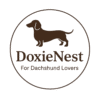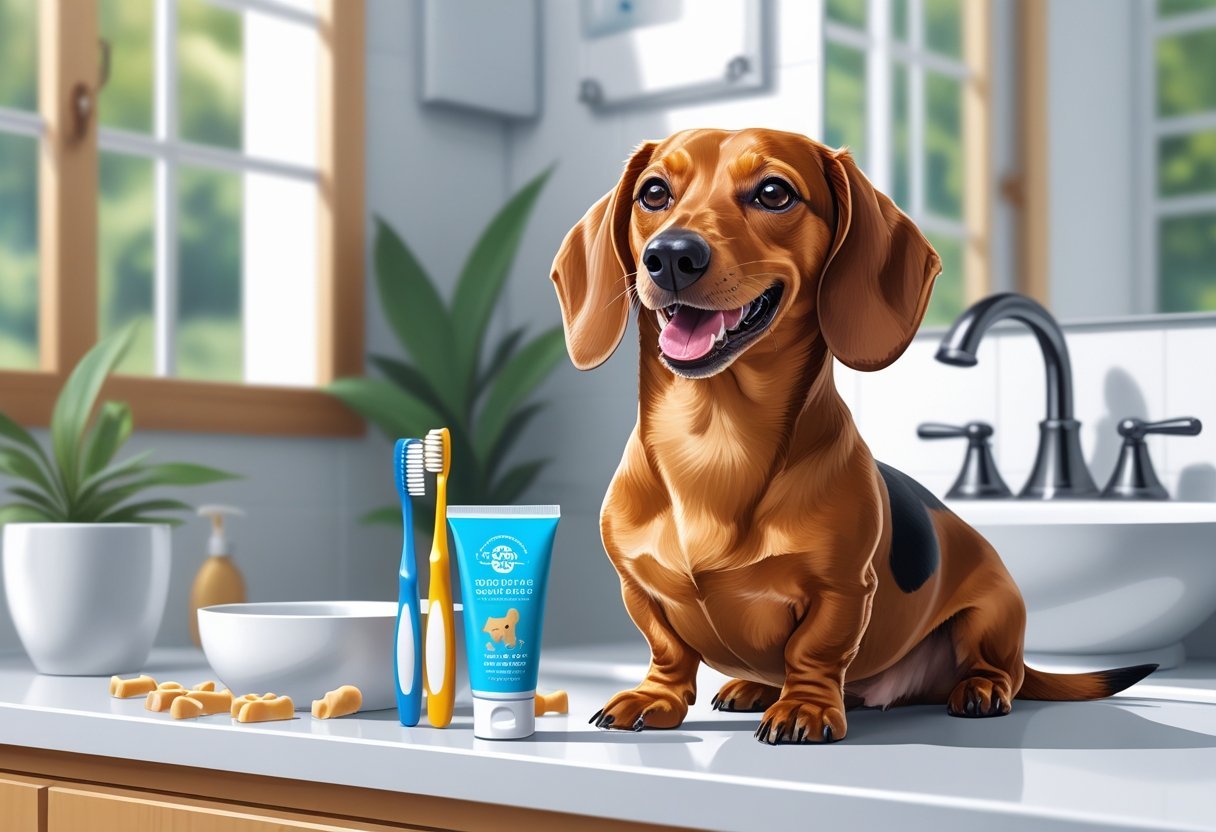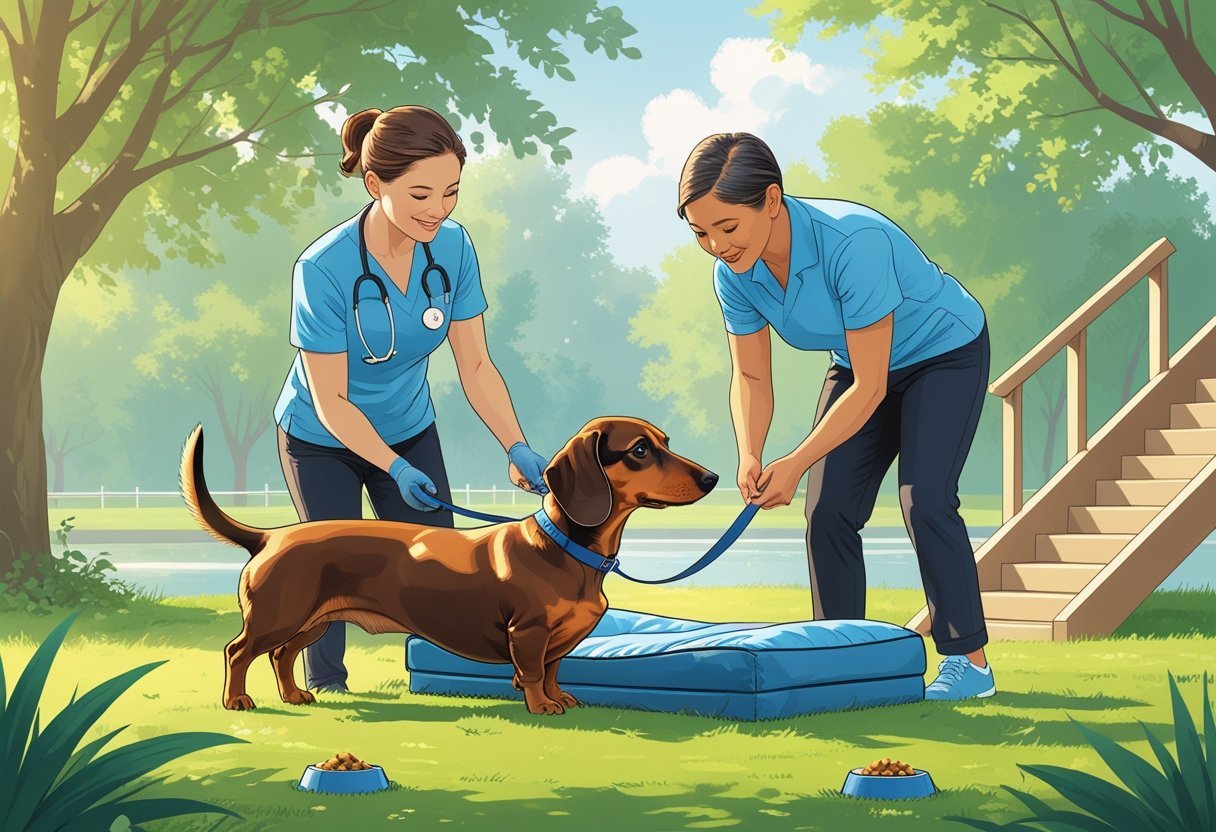Keeping your dachshund’s teeth clean matters for their comfort and health 🦷. When it comes to dachshund tartar removal, acting early is key—plaque and tartar can build up fast if you’re not careful 🐾.
You can safely remove plaque and tartar from your dachshund’s teeth at home with a few easy habits and tools 🪥. That means fresher breath, healthier gums, and, honestly, a much happier dog 🐶.
You don’t need special training to help your dachshund dodge dental problems 🧼. Regular brushing, smart food choices, and a few simple products can really make a difference 🛒.
With the right steps, you’ll prevent painful dental issues and maybe even save some money on vet bills 💰.
Key Takeaways 📝
- Plaque and tartar are manageable with simple at-home care 🏡
- Routine cleaning and a healthy diet help dental health 🍎
- Sometimes, a vet’s help is needed if at-home care falls short 🏥
🐾 Free Dachshund Care Guide
Download our free checklist to ensure your Dachshund stays happy, healthy, and well-loved!
Get Your Free Guide 🐶Understanding Plaque and Tartar in Dachshunds
Plaque and tartar can cause dental problems for your Dachshund, especially if you don’t remove them early 🦷. Knowing the causes and risks helps you care for your dog’s teeth better 🐶.
❓ What Is Plaque and Tartar? 🪥
Plaque is a thin, sticky film made from bacteria, saliva, and leftover food 😬. It coats your Dachshund’s teeth every day 🐾.
If you don’t remove plaque by brushing or chewing, it hardens into tartar (calculus) in just a few days 🧱. Tartar is rough, yellow or brown, and clings to teeth much more stubbornly than plaque ⚠️.
At-home plaque removal can stop this buildup 🛑. If tartar stays, it shelters more bacteria and puts your dog’s gums at risk 💢.
Here’s a quick look at how fast plaque and tartar can develop:
| Stage | Description | Time Frame |
|---|---|---|
| Plaque | Soft, sticky, colorless | 12–24 hours 🕐 |
| Tartar | Hard, yellow or brown, crusty | 2–3 days ⏳ |
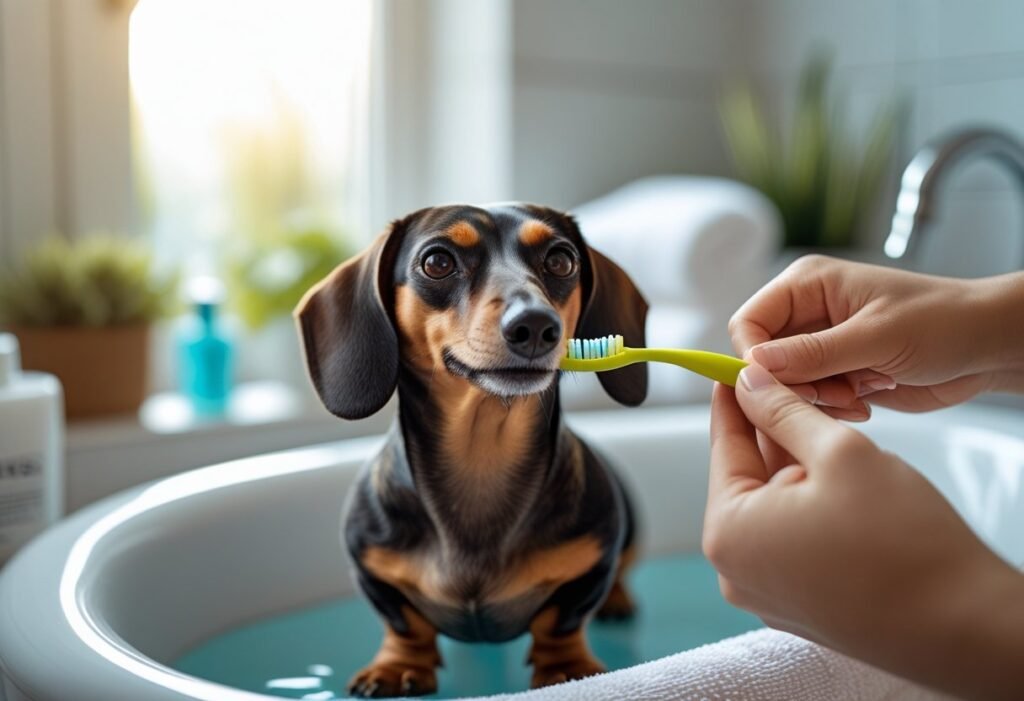
🐾 Why Dachshunds Are Susceptible 🦷
Dachshunds tend to get dental issues more than some other breeds 😕. Their long, narrow jaws and crowded teeth trap food and bacteria easily 🍖.
Plaque and tartar can build up fast because of this ⏱️. Small mouths and crooked teeth make cleaning tough—sometimes bristles and chews just can’t reach every spot 🪥.
The breed’s genetics don’t help either 🧬. Dachshunds often have weaker gums and teeth, so dental disease can show up earlier if you don’t deal with plaque and tartar quickly ⚠️.
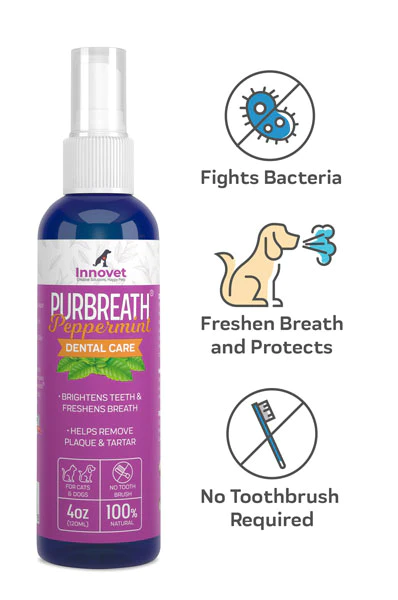
🦷 Innovet Dental Care Gel – Daily Tartar Targeting Formula
This gentle, vet-formulated gel helps dissolve plaque and tartar naturally—no brushing required!
- ✅ Easy to apply directly on teeth or gums
- ✅ Soothes inflammation and freshens breath
- ✅ Perfect for dogs who dislike brushing
💢 Health Risks of Untreated Dental Issues ⚠️
If you skip cleaning, your Dachshund’s mouth can develop gingivitis—that’s when gums get red and swollen 😬. If you still don’t treat it, things can get worse and turn into periodontitis, which causes loose teeth or even tooth loss 😟.
Dental bacteria might even sneak into your dog’s bloodstream 🩸. That puts the heart, liver, and kidneys at risk for infection 🫀.
Watch for signs like bad breath, bleeding gums, appetite loss, or trouble chewing 👃. Regular Dachshund tartar removal at home and vet checkups help keep your dog eating, chewing, and playing comfortably 🐕.
Effective At-Home Plaque Removal Methods
Dachshunds need steady care to avoid plaque and tartar buildup 🦴. A few daily habits and the right supplies can really boost your dog’s oral health 🐶.
🪥 Tooth Brushing Techniques for Dachshunds 🐾
Brushing your Dachshund’s teeth is the best way to remove plaque before it turns into tartar 🦷. Use a soft-bristled toothbrush made for dogs 🧼.
Hold your dog’s muzzle gently and use small, circular motions along the gum line 🔄. Give your dog breaks if they’re new to brushing. Focus on the outer surfaces and especially those back molars where plaque loves to hide 🦷.
Go slow and keep things calm 🌿. Always reward your Dachshund with praise or a treat when you’re done 🍖.
If you can’t manage daily brushing, try for at least three times a week 📅. It gets easier for both of you with practice ✅.
🧴 Selecting the Right Canine Toothpaste and Tools 🐕
Never use human toothpaste—it’s not safe for dogs 🚫. Pick a dog toothpaste with enzymes to break down plaque 💧. Flavors like poultry or peanut butter can make brushing less of a struggle 😋.

Here are some toothbrush options to consider 🪥:
| Tool Type | Pros | Cons |
|---|---|---|
| Dog Finger Brushes | Good control, gentle on gums | Hard to reach small gaps 😬 |
| Small Dog Toothbrush | Reaches back teeth, soft bristles | May be harder to handle 🤷♂️ |
| Dental Wipes | Easy, no brush needed, quick to use | Less effective for tartar 🟡 |
Look for the Veterinary Oral Health Council (VOHC) seal on products ✅. That means they actually work for plaque and tartar removal in dogs 🐾.
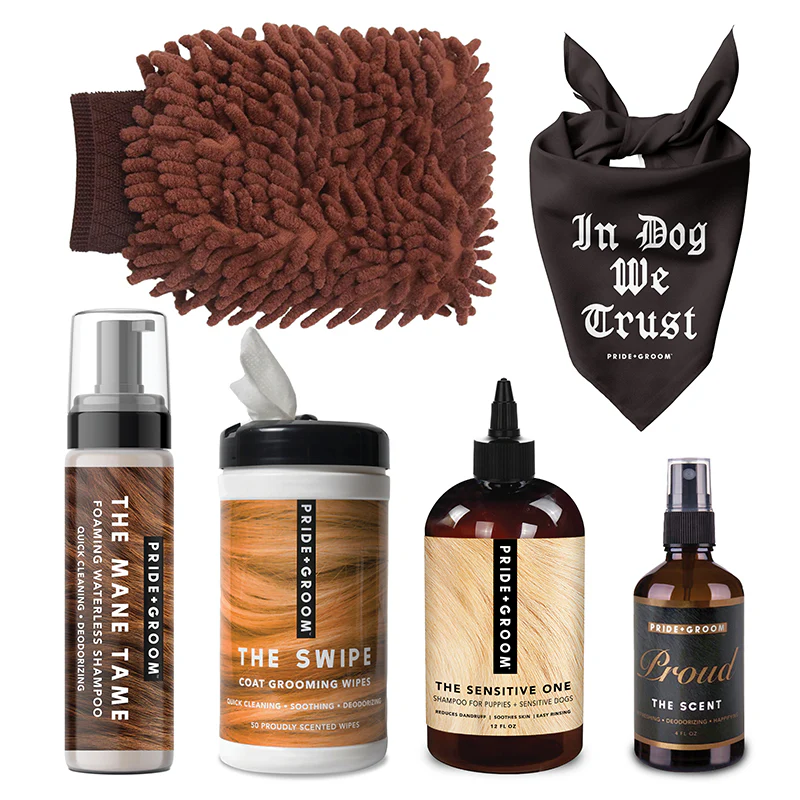
🧼 Pride + Groom Grooming Kit – Clean Pup, Healthy Mouth
A well-groomed Dachshund is less likely to develop skin, breath, or oral issues. This luxe kit covers it all.
- ✅ Gently cleans face, fur, and mouth area
- ✅ Naturally scented and cruelty-free
- ✅ Ideal before brushing or dental checks
🗓️ Daily Oral Hygiene Routine 🐶
A daily routine helps keep your Dachshund’s teeth cleaner between vet visits 🦷. Try these steps:
- Brush your dog’s teeth at the same time every day 🕒
- Offer dental chews your vet approves 🍖
- Give toys that help reduce plaque 🎾
- Check your Dachshund’s mouth for red gums, loose teeth, or bad smells 👃
- Keep fresh water available to rinse away food bits 💧
If brushing just isn’t happening, dental sprays or rinses can help lower bacteria in the mouth 🧴.
At-Home Tartar Removal Strategies
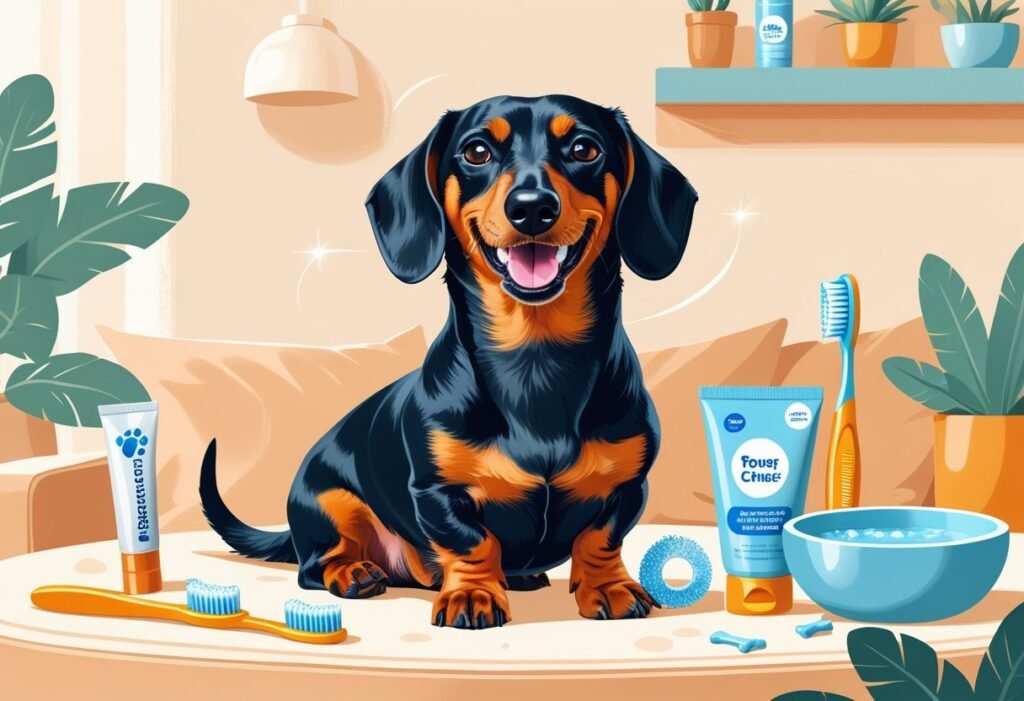
🎉 Grab your free Dachshund care checklist!
Cleaning your dachshund’s teeth at home helps cut down on plaque and tartar. That means less Cleaning your dachshund’s teeth at home helps cut down on plaque and tartar 🏡. That means less risk of gum disease and fewer vet bills 💰.
🦴 Safe Use of Dental Chews and Toys 🧸
Dental chews scrape away soft plaque before it hardens into tartar 🪥. Look for chews with the VOHC seal (Veterinary Oral Health Council) for extra peace of mind ✅.
Don’t pick chews that are too hard or tough—they can crack your dachshund’s teeth ⚠️. Go for chews that bend a bit when you press them, like rubber toys or rawhide alternatives 🧼.
Supervise your dog when they use chews, just in case 👀. Textured rubber balls and gentle dental toys also help clean teeth and keep your dog busy 🎾. Rotate toys to keep things interesting, and skip bones or cooked hard items since they can break teeth or hurt gums 🚫.
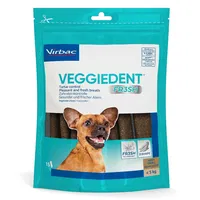
🦴 BudgetPetCare Dental Treats
- ✅ Crunchy bites that clean as they chew
- ✅ Affordable option for everyday tartar control
- ✅ Dachshund-friendly sizes and flavors
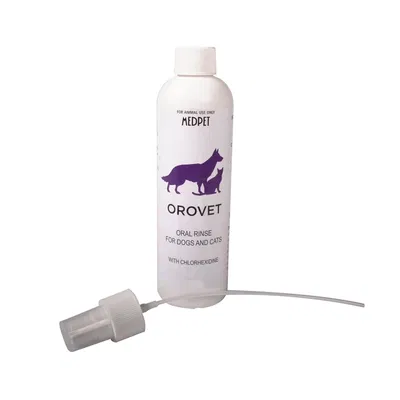
🌬️ PetCareSupplies Fresh Breath Spray
- ✅ Natural breath freshener for Dachshunds
- ✅ Quick daily spray after meals or brushing
- ✅ Plant-based and dog-safe
🌿 Home Remedies and Natural Approaches 🐕
Brushing with a soft-bristle dog toothbrush and enzyme toothpaste is the most direct home method 🪥. Try for daily brushing, but several times a week is still helpful 📆.
Use toothpaste made for dogs—never human toothpaste ❌. Dental wipes or pads for dogs can also help remove surface plaque 🧻.
A simple routine for most folks looks like this:
- Brush or wipe teeth 🦷
- Add a water additive for oral care 💧
- Offer regular dental chews 🐾
Some people use a bit of coconut oil when brushing, but ask your vet before trying homemade mixes 🥥. Don’t use baking soda or hydrogen peroxide unless your vet says it’s safe ⚠️. Regular home care helps keep tartar down and breath fresher 🌬️, but if tartar gets really bad, you’ll need your vet’s help 🏥.
Diet and Nutrition for Healthier Teeth
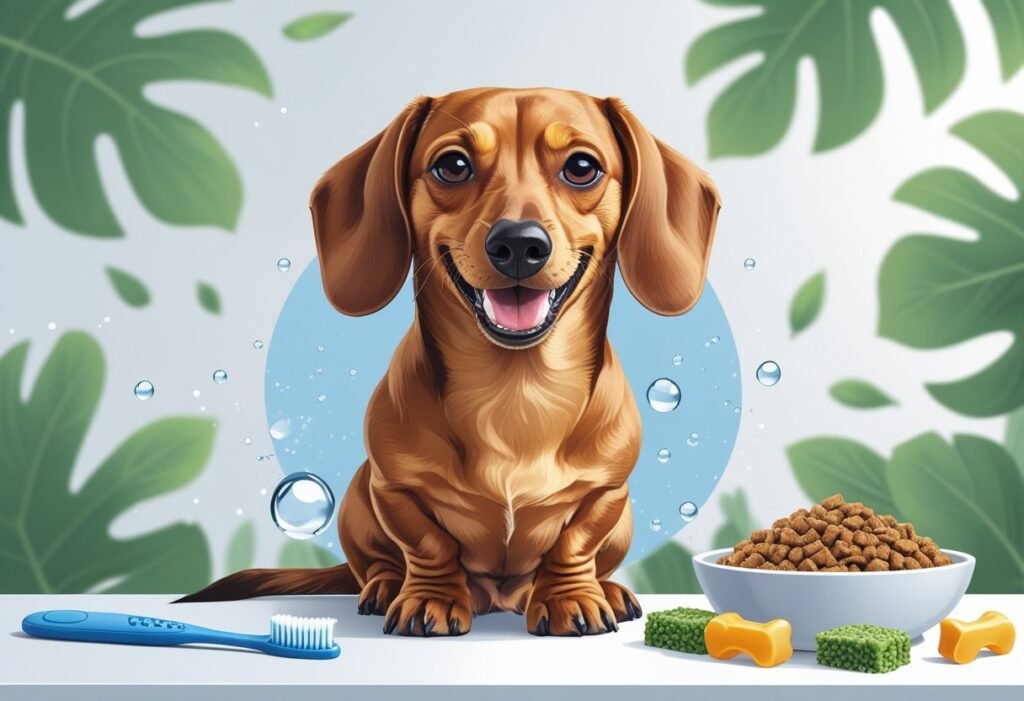
Diet plays a big role in keeping your dachshund’s teeth clean and strong 🍽️. Some foods and additives can help lower plaque and tartar 🦷.
🥕 Foods That Promote Oral Health 🍏
Kibble’s better than soft food for keeping teeth cleaner 🦴. Dry food scrapes off some plaque as your dog chews, while wet food tends to stick to teeth and cause more buildup 😬.
If you use both, make dry kibble the main part of the diet 🐶. Raw carrots and apple slices can work like natural toothbrushes—these crunchy treats help clean teeth as your dachshund chews 🥕
Stick with small pieces and don’t overdo fruit since it’s sugary 🍎. Dental chews and certain toys are designed to remove plaque, too 🧸. Look for chews with a texture approved by the Veterinary Oral Health Council ✅.
Skip hard bones or antlers, though 🚫. They can crack teeth ⚠️.
Here’s a quick cheat sheet:
| Good Choices | Avoid |
|---|---|
| Dry kibble | Only wet food |
| Raw carrots | Sugary treats |
| Dental chews | Cooked bones, antlers |
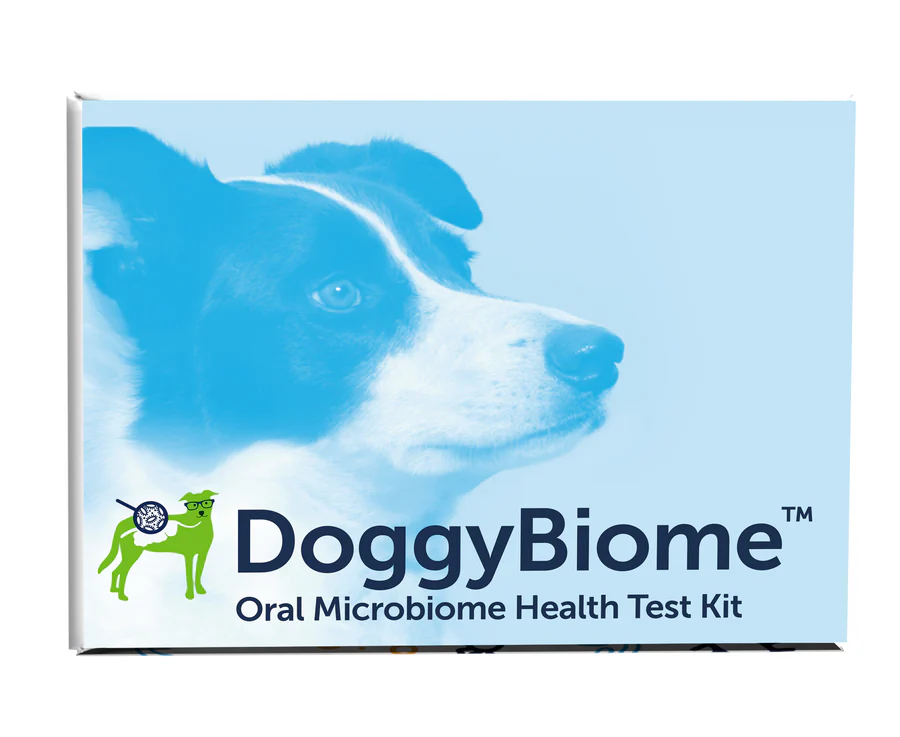
🔬 AnimalBiome Oral Health Kit
- ✅ Targets gut bacteria that affect oral health
- ✅ Holistic support for breath and gum issues
- ✅ Easy daily powder mix-in
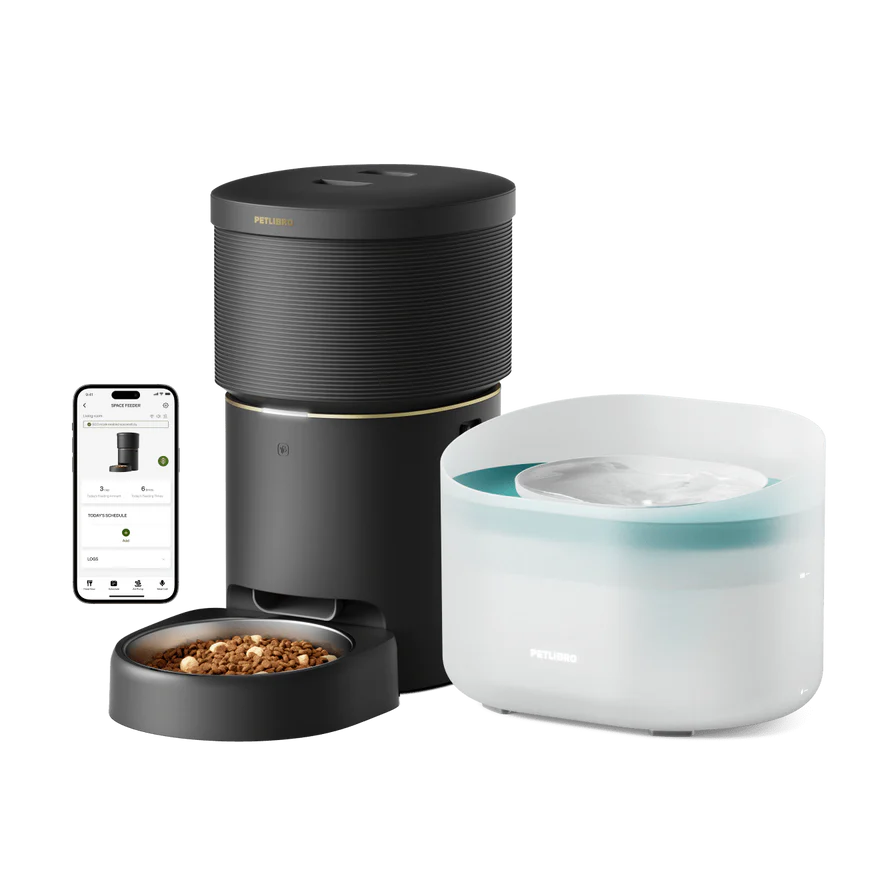
💧 Petlibro Water Fountain
- ✅ Encourages hydration for healthier gums
- ✅ Continuous clean water flow prevents bacteria
- ✅ Whisper-quiet design perfect for home
💧 Water Additives and Supplements 🧴
Water additives can help cut down bacteria in your dog’s mouth 💦. Some have enzymes to fight plaque and freshen breath 🌬️. They’re simple—just add the right amount to your dog’s water bowl each day 🐾.
Supplements like dental powders may also help 🧂. They often use safe ingredients like brown algae or zinc to keep tartar in check 🌿. Always follow directions and ask your vet before trying new products 🩺.
Additives help, but they don’t replace brushing 🪥. Use them as a bonus step in your dog’s dental care routine 🧼. Check for artificial colors or sweeteners, and pick products with good safety reviews ✅
How to Prevent Tartar Buildup on Dachshunds

Tartar forms when plaque hardens on your dachshund’s teeth 🦷. This can lead to gum disease and even tooth loss if you don’t stay on top of it ⚠️.
Stopping tartar starts with daily habits and paying close attention to your dog’s mouth 👀.
🔄 Routine Preventive Care 🪥
The best way to stop tartar is with regular brushing 🧼. Grab a dog toothbrush and toothpaste 🧴.
Brush your dachshund’s teeth every day, or at least a few times a week 📅. Make sure you use toothpaste made for dogs—human stuff isn’t safe for them 🚫.
Chew toys and dental treats can help scrape away plaque 🧸. Find products with the Veterinary Oral Health Council (VOHC) seal for some peace of mind ✅.

Book a professional dental cleaning at your vet’s office once a year 🏥. Vets can reach tartar you just can’t get at home 🦷.
They’ll also spot other dental problems you might miss 👀. It’s just part of the deal when you love a dachshund 🐾.
Feed your dog a balanced diet 🥣. If your vet says dry kibble is okay, it can help slow down plaque because it doesn’t stick to teeth like wet food does 🍖.
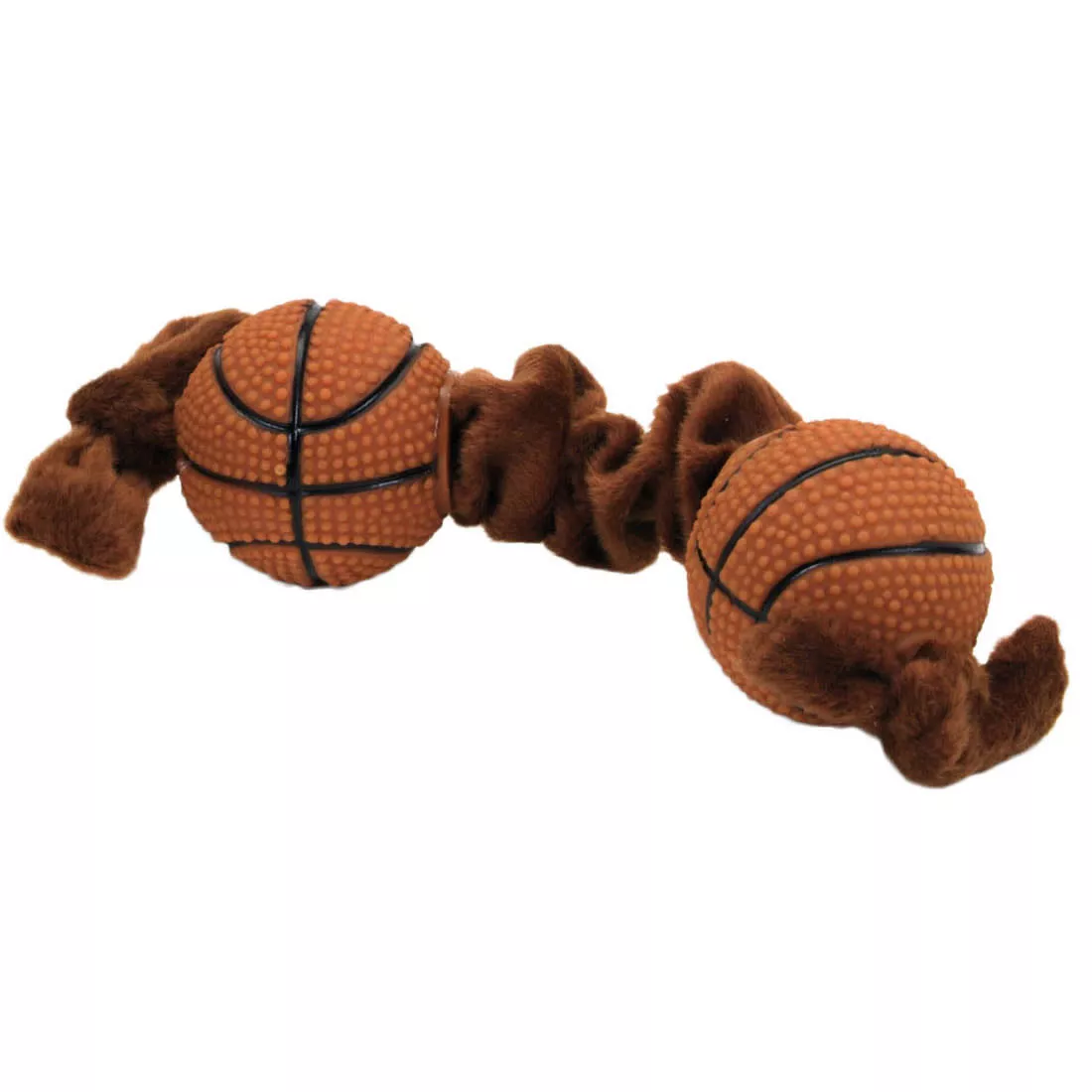
🦷 Coastal Pet Dental Chew Toy
- ✅ Tough but gentle for everyday chewing
- ✅ Massages gums and removes debris
- ✅ Safe for unsupervised use
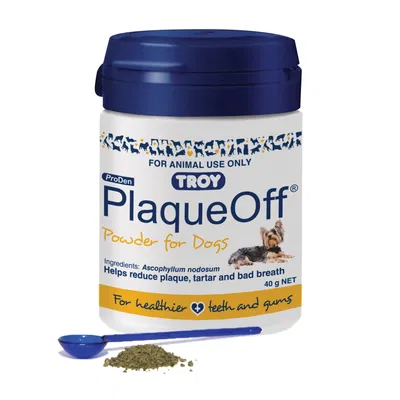
🧻 PetCareSupplies Dental Powder
- ✅ Quick clean option for busy days
- ✅ Reduces surface plaque gently
- ✅ No rinsing, no mess
🔍 Monitoring Signs of Dental Problems 🐶
Take a peek inside your dachshund’s mouth at least once a week 📆. Gently lift their lips and check their teeth and gums 👄.
Watch for these signs of tartar or dental trouble 🦷:
- Yellow or brown buildup on teeth 🟤
- Red, swollen, or bleeding gums 🩸
- Bad breath 👃
- Reluctance to chew or eat 🍽️
- Drooling more than usual 💧
If you spot any of these, call your vet 📞. Early detection can save l a lot of trouble 💢.
Notice if your dachshund starts pawing at their mouth or dropping food 🐕. These little changes might mean they’re in pain 😟.
When to Consult a Veterinarian

Some dental problems just need a vet’s help—no way around it 🏥. Knowing when to get professional care keeps your dachshund’s mouth healthy 🐶.
🧼 Professional Dental Cleanings 🦷
Sometimes, only a professional dental cleaning will get rid of thick plaque and tartar 🧽. Vets use special tools to clean above and below the gum line, places you can’t reach with a toothbrush or dental chews 🪥.
If you see dark, hard buildup or a strong odor coming from your dog’s mouth, it’s time for a vet visit 📞. Most cleanings need light anesthesia so your dog stays comfortable and still 😴.
During the cleaning, the vet checks for cracked or loose teeth and signs of infection 👨⚕️. These cleanings help prevent pain and tooth loss ❌.
Call your vet if you notice:
- Red or swollen gums 🩸
- Bleeding from the gums 🚨
- Visible brown or yellow buildup 🟤
- Difficulty chewing 🍽️
🧡 Smart Feeding & Safety Essentials for Calm Crate Training
- 🩺 The Swiftest Pet Insurance — Compare trusted plans and protect your Dachshund from unexpected vet bills during training and adjustment periods.
- 🥘 ChefPaw Dog Food Maker — Prepare homemade, balanced meals to reward your Doxie during crate training — control ingredients for better health and focus.
- 🍽️ Petlibro Automatic Feeder — Maintain a consistent feeding routine to reduce stress and help your Dachshund feel secure during crate hours.
- 🌱 Wild Earth Vegan Dog Food — A wholesome, plant-based diet that supports digestion, energy balance, and calm behavior during crate time.
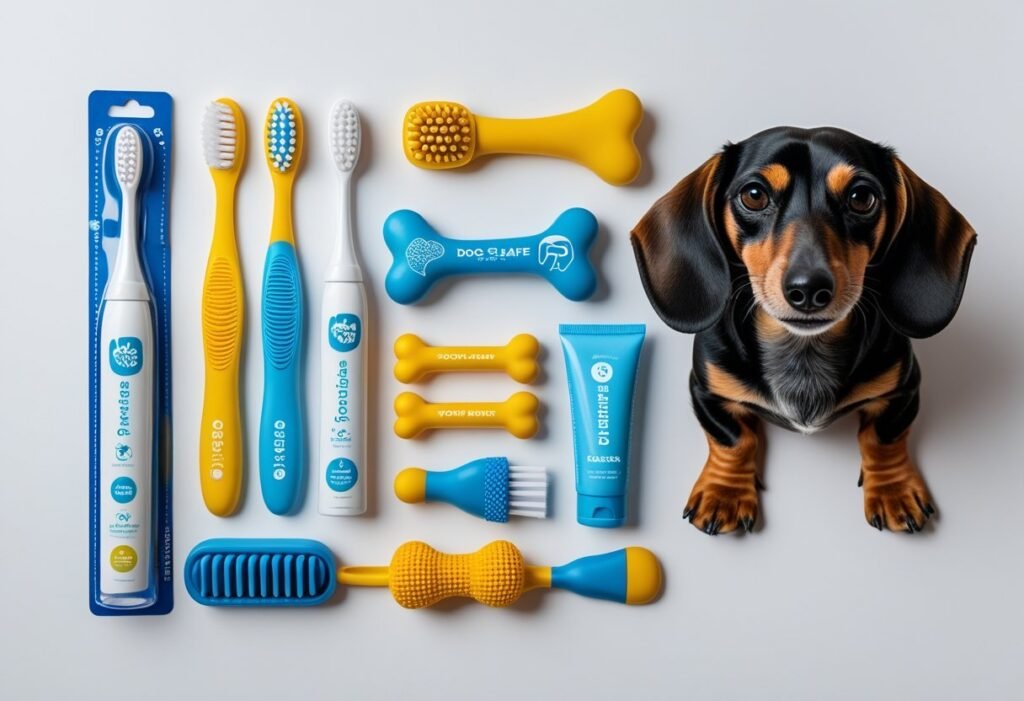
🚨 Recognizing When At-Home Care Isn’t Enough 🏥
Some symptoms mean you need to stop home care and get a vet’s advice 🛑. Bleeding, swelling, obvious mouth pain, or extra drooling can signal bigger problems 😟.
If your dachshund stops eating or starts dropping food, don’t wait—call your vet 📞. Pus, broken teeth, or loose teeth should never be handled at home 🚫.
Infection in the mouth can spread and cause more issues 🦠. Sometimes, even just bad breath means it’s time for professional help 👃.
💛 Gentle Extras to Enhance Crate Comfort & Calm
- 🛏️ Majestic Pet Orthopedic Bed – Soft, supportive comfort that helps your Doxie relax fully during crate rest or downtime.
- 🌿 AnimalBiome Gut Health Kit – Promote balanced digestion and reduce stress-related discomfort to support calm crate behavior.
- 💧 Innovet PurCBD Oil – Natural, plant-based formula to ease anxiety and help your Dachshund settle peacefully inside their crate.
- 🪜 Majestic Pet Stairs – Safe, joint-friendly steps to help your pup enter and exit their crate or favorite spots easily.
- 🧠 Brain Training for Dogs – Engage your Dachshund’s mind with positive games that make crate time enjoyable and stress-free.
🐾 Thoughtful essentials to create a cozy, calm crate space where your Dachshund feels secure, balanced, and happy.
Warning signs to watch for:
- Reluctance to let you touch their mouth 🙅
- Sudden mood changes or snapping 😠
- Any lumps or sores in the mouth ⚠️
- Excessive pawing at the face 🐾
If you notice these, make an appointment with your vet 📅. It’s better to be safe than sorry 🐾.
🐾 Don’t Miss Out!
Download our free Dachshund care guide to keep your furry friend happy and healthy.
Get Your Free Guide 🐶Frequently Asked Questions
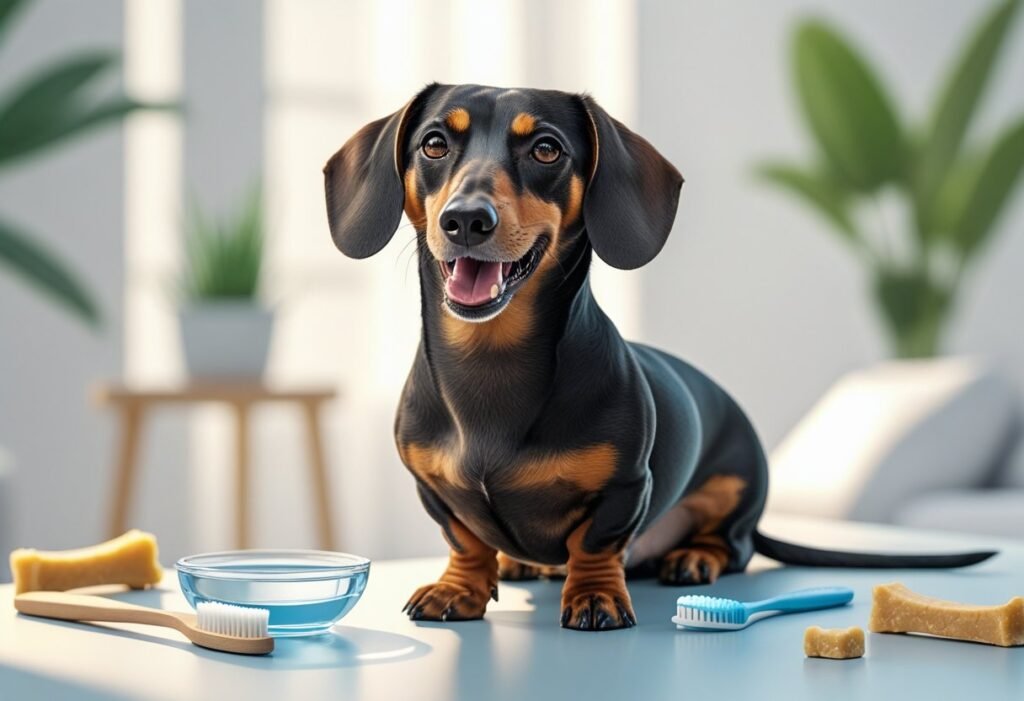
🐾 Daily care for your dachshund’s teeth can really help control plaque and tartar 🦷. Picking the right methods and tools keeps their mouth healthier and more comfortable 🧴.
❓ What methods can I use to soften and remove tartar from my dog’s teeth naturally? 🥕
Brushing your dachshund’s teeth every day with a dog-safe toothpaste helps soften plaque before it turns into tartar 🪥. Dental chews and special dental diets can also keep teeth cleaner 🍖.
Some people give their dogs raw carrots or apple slices as treats to help scrape off loose plaque 🍏. A few folks gently rub coconut oil on their dog’s gums and teeth, but honestly, it doesn’t do much for tartar 🥥.
💡 What at-home tips are effective for reducing plaque and tartar in Dachshunds? 🏡
Brush your dog’s teeth every day, preferably at the same time so it becomes routine ⏰. Use toothbrushes and toothpaste made for dogs, not people 🧼.
Give them toys made for dental health, like rubber or nylon chews 🎾. Dental treats with the Veterinary Oral Health Council (VOHC) seal are a good bet ✅.
Even with home care, regular professional cleanings at the vet are important 🏥.
🔍 How do I distinguish between plaque and tartar on my dog’s teeth? 🦷
Plaque is thin, soft, and mostly colorless 😬. If you touch your dog’s teeth, it feels sticky 👆.
Tartar is hard, rough, and yellow or brown 🟤. It sticks to teeth and doesn’t come off with brushing 🚫.
🧰 What are the best tools for removing tartar from my dog’s teeth myself? 🪥
A soft-bristled toothbrush made for dogs is your best bet for at-home care 🐾. Finger brushes work well for smaller mouths 👍.
Dental wipes and oral gels for dogs help, but they don’t replace brushing 🧻. Don’t use dental scrapers or scalers at home—they can hurt your dog’s gums or damage enamel ⚠️.
🛑 Can severe tartar buildup be safely removed at home, and if so, how? ❌
Severe tartar buildup is tough and really sticks to the teeth 🧱. You just can’t remove it with a toothbrush or home tools 🪥.
Trying to scrape off heavy tartar yourself can hurt your dog and cause bleeding or infection 😟. Leave that job to your veterinarian during a professional cleaning 🏥.
🌿 Are there natural remedies to treat dental disease in dogs? 🍃
No natural remedy can cure dental disease or fully remove tartar ❌. That’s just the reality, even though it’s tempting to hope for a magic fix ✨.
Some folks try coconut oil or specific herbs 🌿. These might help cut down mouth bacteria when you use them with brushing 🥥.
But you shouldn’t skip regular brushing, dental treats, or those vet cleanings 🚫. Before trying new remedies, it’s best to check with your vet—just to be safe 📞.
